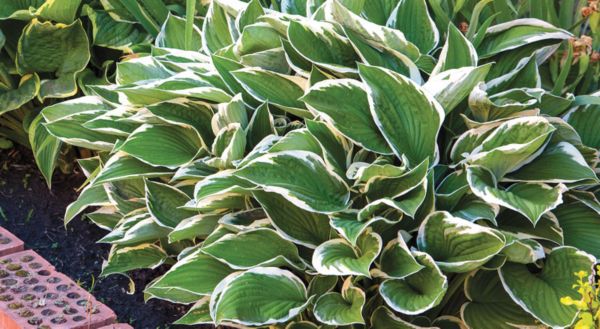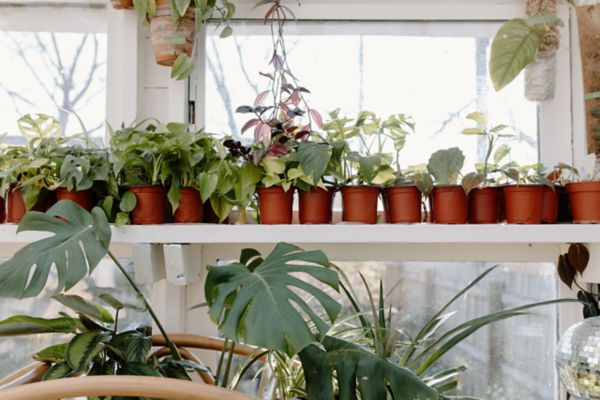How to Grow Snake Plant
Authored by Leah Chester-Davis
Snake plant is one of the staples in the list of most popular houseplants. Like pothos, it’s nearly indestructible, and that must be one of the reasons for its popularity. No need to have a green thumb to grow this wonder of a plant. It tolerates low light conditions and does not need to be fussed over. For anyone wishing to have success with houseplants or for those who travel a certain amount, snake plant is a great choice. It also is said to help clean indoor air by removing toxins such as formaldehyde and benzene.
Snake plant is a great starter plant for children as they likely will be rewarded with success at keeping a plant living and thriving. Better yet, just call it a sword plant and you may be on to something when it comes to getting children interested in plants. After all, its thick, long, upright leaves that grow in a cluster or rosette look like a pot of swords and there are plenty of sword-wielding heroes in children’s books and movies. Each cluster typically has up to six leaves and a kid of any age will appreciate the dramatic appearance.
The plant that grows tall and upright, with leaves about 2 inches wide and 3 feet tall, is what most people think of when they hear “snake plant.” The leaves are deep green with light gray-green horizontal stripes. It lends an architectural element to any space, whether modern or traditional. Outdoors, a mature plant may bloom, producing flowers that are small, fragrant, and greenish white, followed by orange berries. Flowers and fruit rarely appear on indoor plants. Snake plants are considered a succulent, and there are many forms and color variations available, including those banded or edged in gray, silver, or golden yellow.
‘Laurentii’, which as yellow leaf margins, is one of the more common, yet beautiful, upright forms. ‘Bantel’s Sensation’ has vertical white striping. Compact forms, often called birds-nest sansevieria because of the tight, nest-like appearance, are quite fun. They grow about 4 to 8 inches tall. ‘Hahnii’, which has dark green leaves with lighter horizontal bands, or ‘Golden Hahnii’, which has gray-green leaves, dark green cross bands, and creamy yellow margins, are popular options for smaller spaces such as an office desk, kitchen windowsill, or bathroom.
About snake plant
| Botanical name: | Dracaena trifasciata (previously known as Sansevieria trifasciata) |
| Common name: | Snake plant, mother-in-law’s tongue, devil’s tongue, viper’s bowstring hemp |
| Plant type: | Houseplant; tender evergreen perennial |
| Size: | 8 inches to 4 feet tall, depending on cultivar |
| Sun exposure: | Indirect light; can handle low light |
| Soil type: | Well-drained potting mix for succulents and cactus |
| Soil pH: | 5.5 to 6.5 |
| Hardiness zones: | 10 to 12 |
| Average first frost: | Varies by region |
| Average last frost: | Varies by region |
| Container friendly: | Yes |
| Beginner friendly: | Yes |
Growing
This popular houseplant prefers bright, indirect light, though it will tolerate low light rooms. Limit its exposure to direct sunlight or keep it out of direct sunlight altogether. Unlike many other houseplants, snake plants tolerate low humidity. It can also handle temperatures on the cooler side for brief periods, such as 50 degrees, though it will be happiest at 55 to 85 degrees F.
Sansevieria vs. Dracaena
On occasion, someone in the plant world decides to change the botanic names of certain plants, and that has happened recently with this plant. Long called Sansevieria trifasciata, it is now known as Dracaena trifasciata. I’ll likely continue to call it Sansevieria, as I like that better than the common names of snake plant or mother-in-law’s tongue. But no matter what you call it, this plant is a nice addition to any houseplant collection.
Planting
Select a container that has drainage holes. Use a quality potting mix for succulents and cacti to ensure good drainage. Snake plants do not like wet, soggy soil so avoid overwatering, which can cause the roots to rot. When watering, add water until it drips through the drainage hole. Empty any standing water from the saucer. Allow the soil to dry out between waterings. Stick your finger into the soil and if it is dry, it’s time to water. During the winter, it will need to be watered even less, maybe every one to two months. When watering, do not pour water into the center of the rosette but, rather, water at the base of the plant.
Propagating snake plants
It’s easy to propagate this plant, either by division or cuttings. Division is the easiest. Simply remove the entire plant from the container and tease apart the leaves and roots into more than one plant and repot into separate containers. To propagate cuttings, cut 3-inch lengths of a leaf and then place the bottom end in damp sand or potting mix for succulents. It takes about three months for cuttings to root and send up new shoots. According to Colorado Extension, this process can be sped up by placing the container in a clear plastic bag with a few holes to increase the humidity and set in a warm area with medium light. The sections should root in a few weeks.
Allow soil to dry out completely between waterings.
Fertilizing
- Succulents are light feeders and do not need a lot of fertilizer. During the growing season, fertilize with succulent and cactus fertilizer at half the recommended strength on the container once per month. Another option is to use a general-purpose houseplant fertilizer diluted to half the strength suggested on the container. Organic options are available. Do not fertilize during the winter months.
- While these plants can live for years without any fertilizer, nutrients leach out of the potting mix with repeated waterings. Adding a little fertilizer can give your plant a boost and help it resist any pests or diseases.
Controlling Pests, Diseases, and Other Problems
- Few pests bother this plant. On occasion, though it is rare, mealybugs and spider mites may be an issue. Swipe the leaves with a cotton ball dipped in rubbing alcohol.
- Overwatering can cause root rot. Allow the soil to dry out slightly between waterings.
Overwatering can cause root rot.
Expert Tips
- During the summer, take your plant outside to give it a chance to rejuvenate. Give it a chance to acclimate by placing in a protected, shady area, and then limit its exposure to full sun. Bring back inside before the first frost date.
- On occasion, use a soft, damp cloth to remove the dust from the leaves.
Frequently asked questions
One of the leaves of my snake plant is damaged and unsightly. Will I harm the plant if I cut it off?
If your plant has damage to one of the leaves, yes, the best way to remove it is to cut it off at soil level, which should not be harmful to your plant.
How often do I need to repot my snake plant?
Fortunately, this plant is low maintenance and can live in the same container without repotting for years, though it may benefit from being repotted into new soil every 5 or so years. The compact types may benefit from repotting every 3 or so years. Repotting gives you the perfect excuse to divide the plant and repot extras for more houseplants in your own home or to give them away to your friends.





